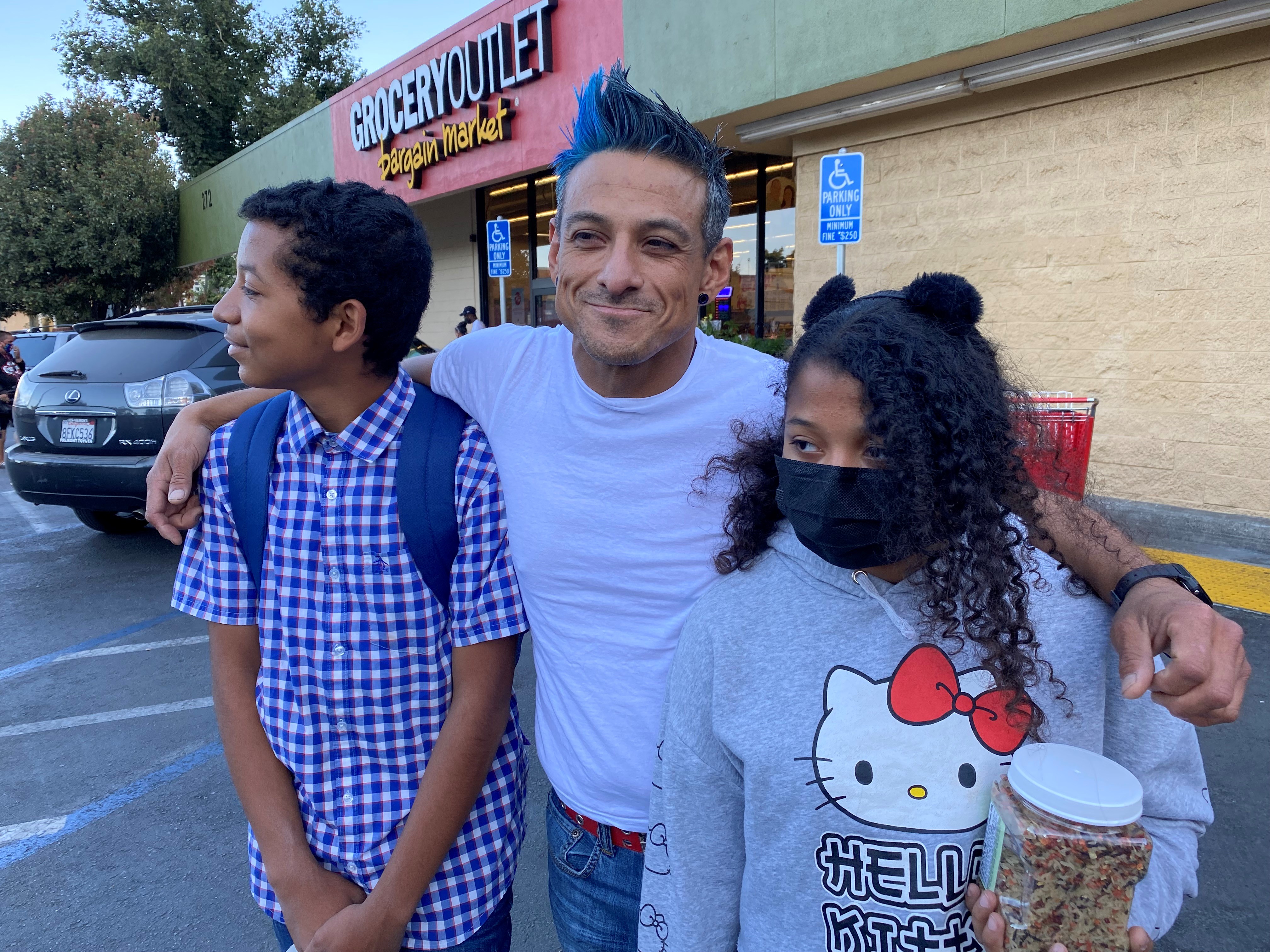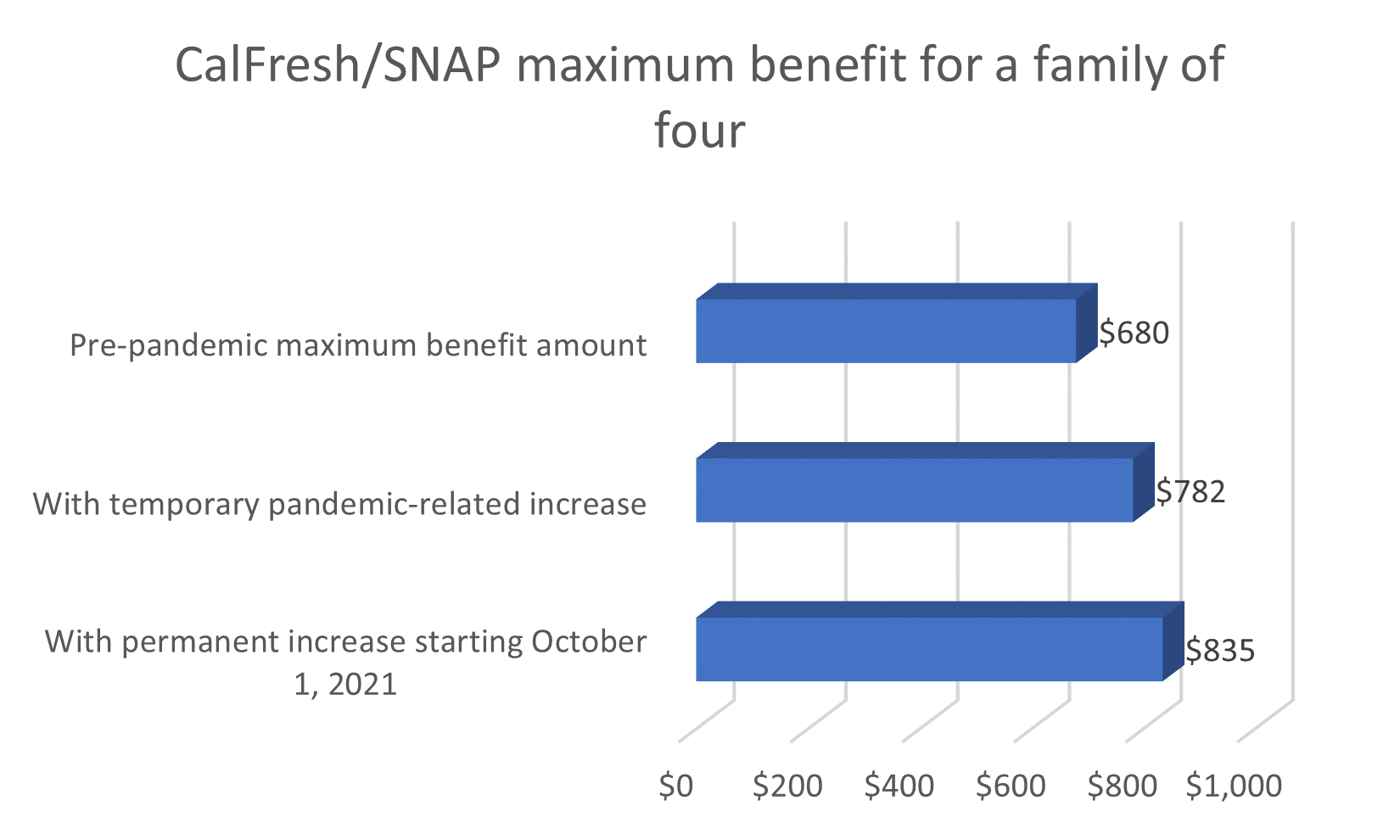Single Father Shares His CalFresh Success Story
Food insecurity remains widespread in the County of Santa Clara , with more people seeking assistance during the pandemic
COUNTY OF SANTA CLARA, CALIF. – For the first time in nearly 50 years, recipients of a federal nutrition program saw a noticeable jump in benefits. The increase helped families across the country put food on their table, just as pandemic-related benefits started to wind down for many struggling during the COVID-19 health crisis. On October 1, 2021, CalFresh (known federally as the Supplemental Nutrition Assistance Program or SNAP) payments increased about 22% compared to pre-pandemic levels.

Francisco Pacheco, of San José, with his two children outside of a local grocery store.
Francisco Pacheco, of San José, is one of those people who saw the bump in food benefits. During the pandemic – when many companies sent their employees to work from home and subsequently closed down on-site cafeterias – he lost his job as a wellness chef for a high-tech company. The single dad suddenly found himself unemployed, and soon, without a home for himself and his two teenagers.
“As a cook and chef, our industry was hit hard. Out of work and not able to pay bills, we found ourselves in the shelters and it was rough, but we were able to sustain ourselves,” Pacheco said.
Using CalFresh benefits, the family was able to buy groceries to prepare meals in motels. And later, when they found the means to move into an apartment, they were able to cook family meals in the kitchen. During a year of innumerable challenges, "the food assistance added a stability to our lives when everything was so unstable,” Pacheco said.
Pacheco is not alone. Food insecurity in the County of Santa Clara is widespread, with many residents making day-to-day choices between whether to pay rent or buy groceries. The COVID-19 health crisis has only deepened the need, with the number of people in the County of Santa Clara seeking CalFresh food assistance increasing by about 22% since the pandemic began. Children and adults ages 65 and older make up more than half of those receiving assistance. Of those enrolled, there is also an overrepresentation of minority groups, including Hispanic, Black, and Vietnamese community members – all populations who are hardest hit by the pandemic.
These are members of our community who, before the pandemic, already faced more obstacles than everyone else. The more resources we have to make life more equitable for all residents, the more resilient we are as a community.Angela Shing, Director of Employment and benefits service for the County of Santa Clara Social Service Agency
“These are members of our community who, before the pandemic, already faced more obstacles than everyone else. The more resources we have to make life more equitable for all residents, the more resilient we are as a community,” said Angela Shing, Director of Employment and Benefits Services for the County of Santa Clara Social Services Agency.
After a difficult year of unemployment, Pacheco recently began a new job using his culinary skills at a local chocolatier.
“I feel relieved,” he said. “I feel like we’ve gotten by and gotten through some of the most difficult parts of this storm, of this pandemic. I feel like I can see the sunshine over the hills and I wouldn’t have been able to make it if it weren’t for CalFresh.”
During a recent trip to the grocery store with his children, Pacheco stopped at the entrance and checked on a community member standing by the door. “Do you need something to eat?” he asked the person, willing to use his EBT card to help someone else. On the way out of the store, he checked on several others.
“We take care of our neighborhood and we take care of those around us. If everybody did so, I think everything would be a little better,” Pacheco said.
CalFresh Benefits Increase for the First Time in Nearly 50 Years

On October 1, 2021, payments for CalFresh (known federally as the Supplemental Nutrition Assistance Program or SNAP) increased about 22% compared to pre-pandemic levels. For a family of four receiving the maximum benefit, the difference is an extra $155 per month. When compared to benefit amounts that include temporary pandemic relief, their monthly allotment starting in October is about $53 more.

CalFresh Electronic Benefit Transfer (EBT) cards can be used at grocery stores, farmers’ markets, and to purchase groceries online for home delivery through Amazon, Walmart, and participating Albertsons, Safeway, and Vons locations. In addition, the County’s Restaurant Meals Program allows CalFresh clients who are disabled, homeless, or 60 years and older to use EBT cards to buy prepared meals at participating restaurants.
View CalFresh supported restaurants.
For more information on eligibility and how to sign up for CalFresh benefits:
- Visit the County's Social Services Agency site in English, Spanish or Vietnamese.
- Services by phone are available by calling (408) 758-3800.
- Mail and fax applications are also available upon request.